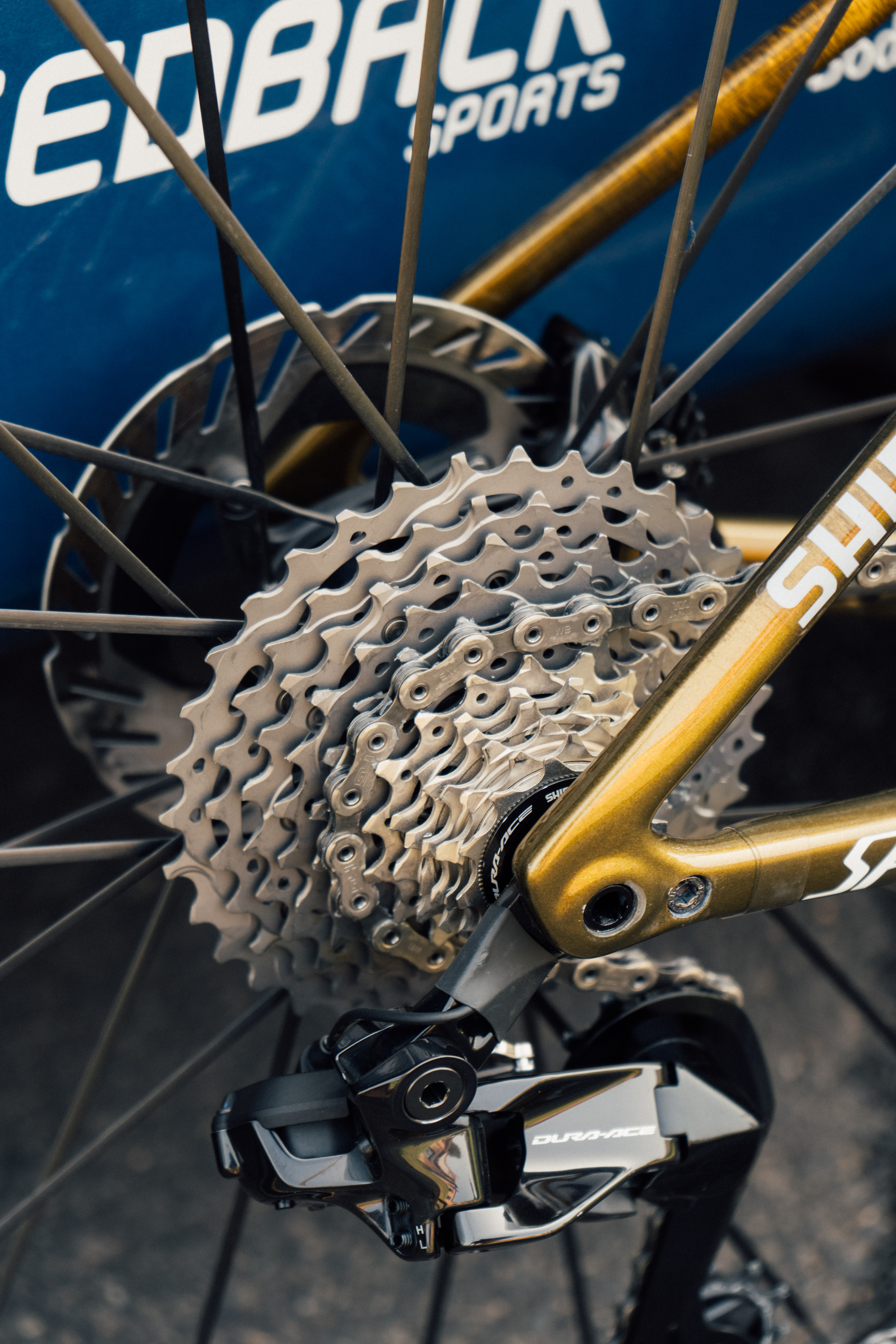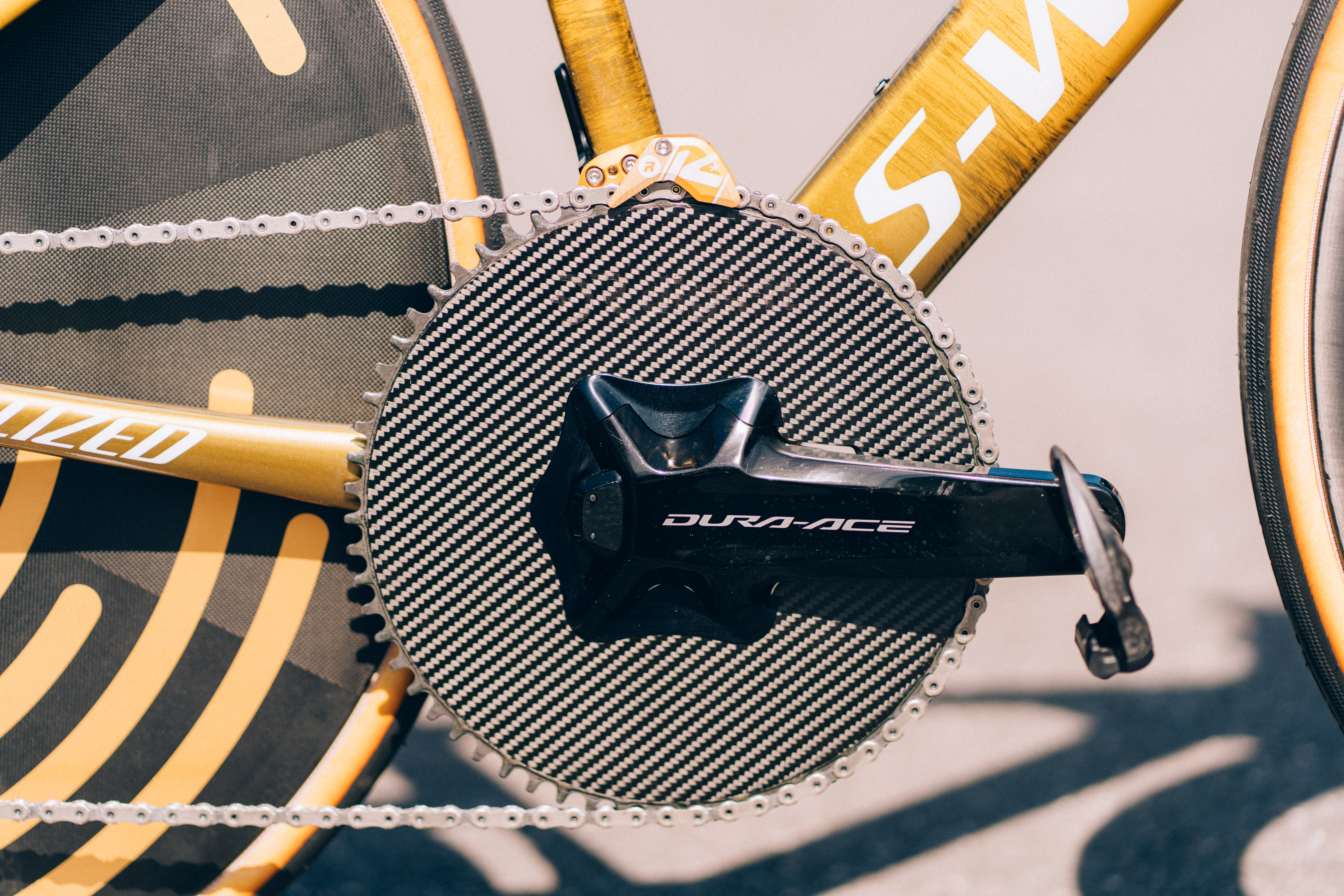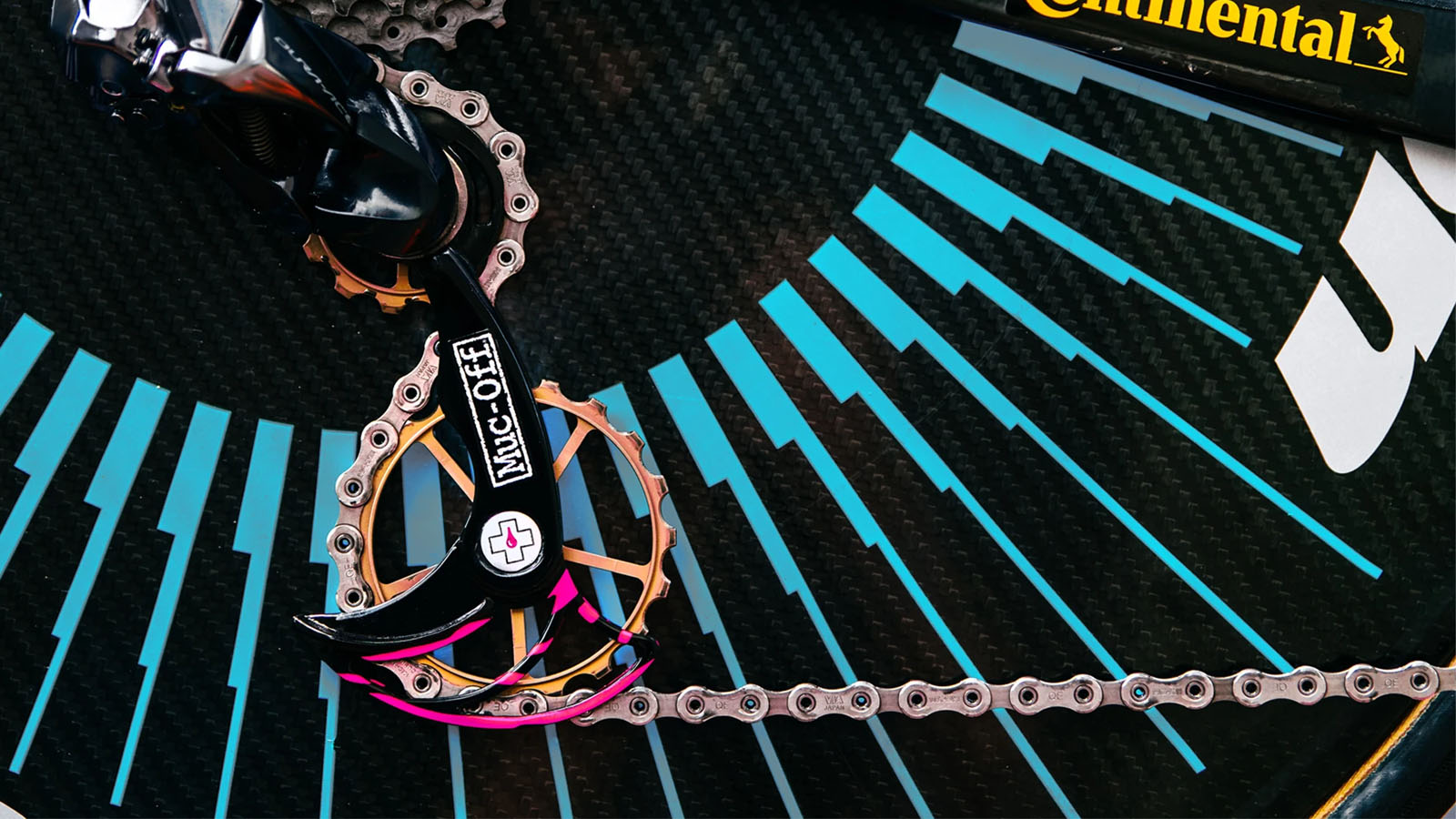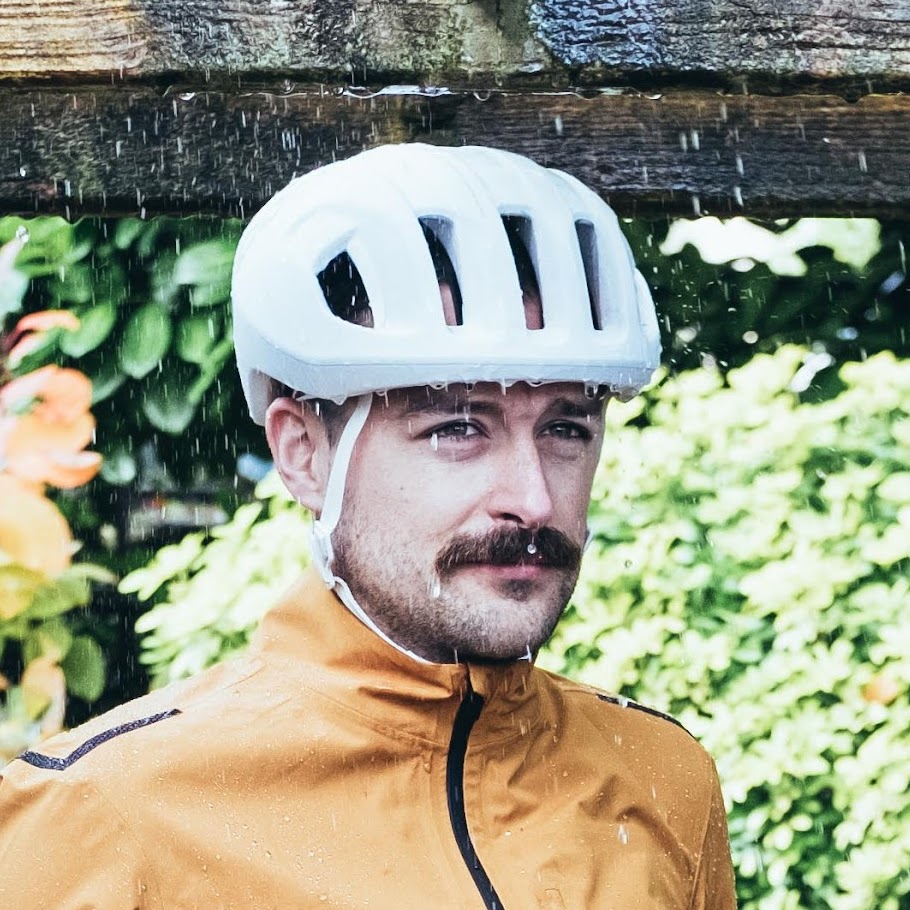Why the Tour de France riders' enormous chainrings aren't just about a faster gear
Enormous chainrings don’t just make things harder, they make things easier too

If you are one of the thousands of cycling fans, like my parents, for whom ‘cycling’ and ‘Tour de France’ are essentially interchangeable, you may well not be as up to speed with the latest in time trial technological advancements as those of us who, for example, wouldn’t bat an eye at watching every minute of the Tour de Suisse or the Baloise Belgium Tour.
Today, at the time of writing, is time trial day at the Tour, and every rider will be setting off on a totally flat course against the clock to try and eke out a few seconds over their main rivals. As well as using special bikes, crazy looking helmets, and covers on their shoes to help smooth the airflow, you might also notice that some riders are using really, really big gears at the front of their bikes.
If you look at my gallery of Remco Evenepoel’s bike, the standout favourite for the stage win today if he can avoid any mechanical incidents or crashes, you’ll see he has an all-carbon chainring with 64 teeth on it, and while that is big, it’s not the biggest we’ve seen either. Tobias Foss of Ineos Grenadiers has been spotted using a 68-tooth chainring, which is a full 1.7 times as large as the stock 40-tooth option that comes on the lower-tier SRAM and Shimano GRX 1x groupsets.
Why are they so large? Isn’t that going to make it really hard to pedal, or are they imbued with superhuman strength? Well, yes, it will make things a bit harder, and the riders are indeed a lot stronger than the average human, but massive chainrings are actually there to make things easier, or at least faster for the same effort.

Bigger chainrings are easier to pedal
OK, stick with me on this, but these huge chainrings aren’t necessarily to allow the riders to pedal at higher top speeds, though they do facilitate that where applicable. They are used to make the bike more efficient, rather than faster.
With a normal-sized chainring, say a 52t or even something large but still ‘normal’ like a 58t, the pros are strong enough that they will spend a lot of time in the smallest sprocket of the cassette at the back of the bike. Swapping to a larger chainring means the riders spend more time with their chain in the middle of the cassette, in turn meaning the chainline (literally the shape of the line the chain makes) is straighter.
A straight chainline is more efficient, as each link has to deflect less as it connects the chainring at the front and the sprocket at the rear, meaning fewer precious watts are wasted and more power ends up on the road, but there’s more to it than that.
The latest race content, interviews, features, reviews and expert buying guides, direct to your inbox!

As the chain travels around the chainring, each link has to articulate less on bigger rings than it would on a smaller chainring. Correspondingly, at the rear, as the riders would be using a larger rear sprocket to maintain the same gear, it is more efficient for the same reason at the back too.
This is the same reason we also see riders using oversized pulley wheels in their rear derailleurs; it’s all to make the drivetrain more efficient (higher speeds for the same effort) rather than an attempt to reach a higher top speed.
There is also a final, aerodynamic benefit. Your road bike at home probably has two chainrings at the front, and a front derailleur to switch the chain between them. This is heavier, has a lot more surfaces and hollows for the air to get caught up in, and in turn increases drag. By using one large, flat chainring, there is no second ring or front derailleur to catch the breeze.
The secondary benefit of all this is actually having a harder hardest gear to push on the descents. This is more of a happy accident that occurs in the pursuit of efficiency, but for those that can push such giant gears, you can be sure they’ll do so.

Where will it stop?
As with every bit of bike tech there will always be those who push things above the limit. 68 teeth is the current largest we’ve seen on the road, but if there was a performance gain to be had with going larger, then you can be sure teams would go for it.
Bigger and bigger chainrings weigh more, though (this is why they tend to be made from carbon fibre rather than aluminium), and you need a longer chain (more weight again). At some point, the weight penalty - if there are any climbs at all - may outweigh (pun intended) the efficiency gains on offer.
There is also a chance the UCI, the sport’s governing body, may simply clamp down on the use of mega gears in time trials as it is threatening to do for mass start racing.
Of course, even if that restriction comes into force, riders could swap to a bigger cassette at the back. On flat roads, I used to love riding with an 11-speed 11-21 cassette, with a single jump in tooth count per sprocket making the difference between each gear shift really small. I can foresee an instance where brands will make a 13-speed 14-26T cassette, to be used by time triallists with a 68T chainring for maximum aerodynamic and efficiency gains.
Personally, I wouldn’t be shocked to see a 70 tooth chainring either, but beyond that, at least in the next few seasons, it seems unlikely.

Will joined the Cyclingnews team as a reviews writer in 2022, having previously written for Cyclist, BikeRadar and Advntr. He’s tried his hand at most cycling disciplines, from the standard mix of road, gravel, and mountain bike, to the more unusual like bike polo and tracklocross. He’s made his own bike frames, covered tech news from the biggest races on the planet, and published countless premium galleries thanks to his excellent photographic eye. Also, given he doesn’t ever ride indoors he’s become a real expert on foul-weather riding gear. His collection of bikes is a real smorgasbord, with everything from vintage-style steel tourers through to superlight flat bar hill climb machines.
You must confirm your public display name before commenting
Please logout and then login again, you will then be prompted to enter your display name.
